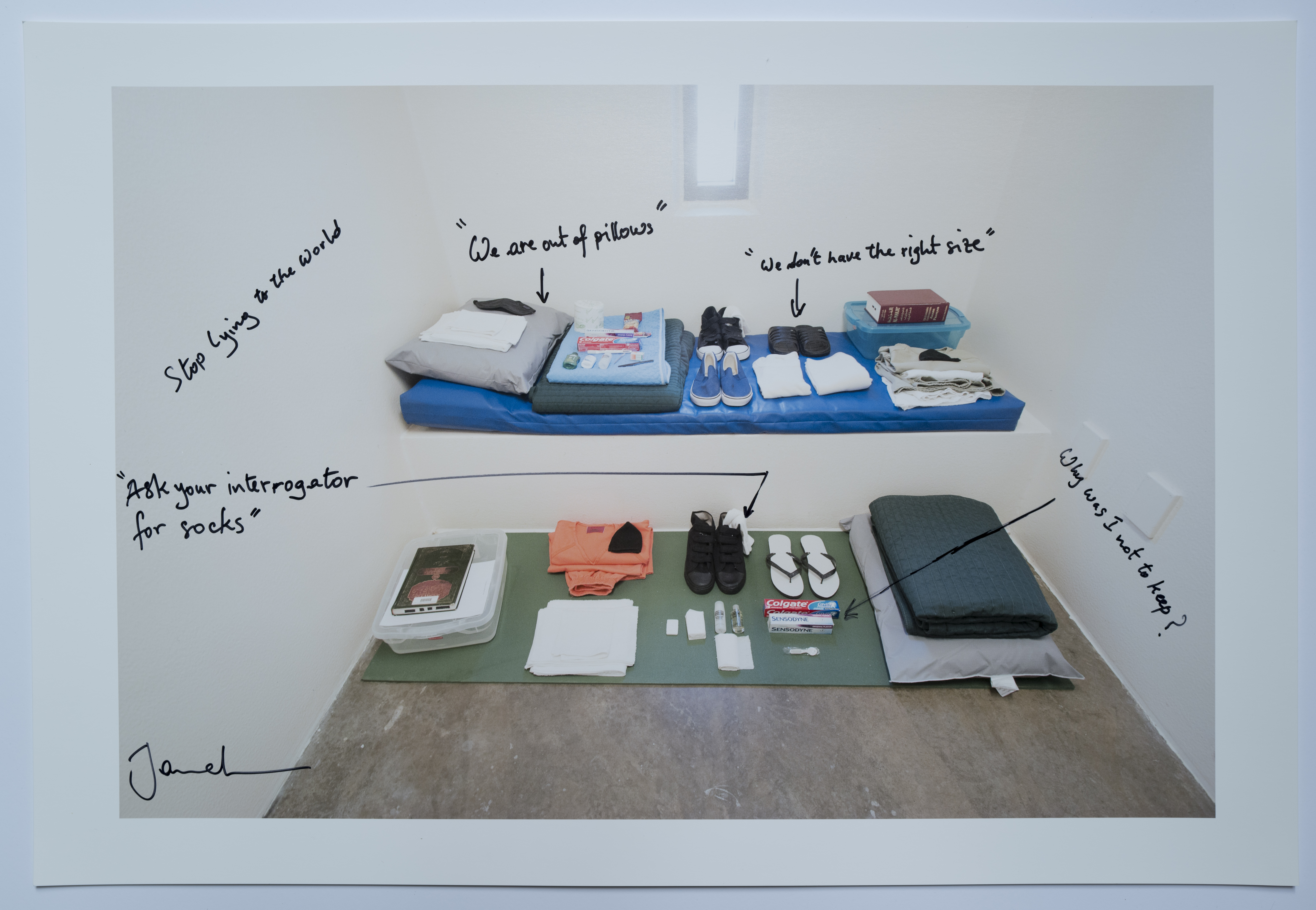 "Comfort Items, Camp 5 (Stop lying to the world), 2015" by Debi Cornwall and Djamel Ameziane was one of the works of art on display at DePaul Art Museum's 2022 exhibition titled “Remaking the Exceptional: Tea, Torture, and Reparations | Chicago to Guantánamo.” (Photo courtesy of the artists)
"Comfort Items, Camp 5 (Stop lying to the world), 2015" by Debi Cornwall and Djamel Ameziane was one of the works of art on display at DePaul Art Museum's 2022 exhibition titled “Remaking the Exceptional: Tea, Torture, and Reparations | Chicago to Guantánamo.” (Photo courtesy of the artists)An award-winning art exhibition at DePaul Art Museum features prominently in
recent news coverage and a short film on Teen Vogue.
Last summer, DePaul Art Museum was the meeting spot for Chicago public safety, health and justice innovators to discuss the topic of restorative justice. Artists, survivors of violence, entrepreneurs, business leaders, public defenders, policy experts, restorative justice practitioners and affected people all gathered to view DPAM’s highly-publicized exhibition, “
Remaking the Exceptional: Tea, Torture, & Reparations | Chicago to Guantánamo,” before diving into potential alternatives to policing, prosecution and prison.
Organized by news outlet Teen Vogue and Zealous, an organization whose goal is to challenge injustice through media, storytelling and the arts, the conversations started at the museum helped lead to the first short film in a scheduled series about restorative justice topics.
Restorative Justice: Remaking the Exceptional focuses on the “current, failed approach to violence, what ‘restorative justice’ means, and how the practice offers a path forward for healing, accountability, health and safety,” the Teen Vogue article says.
“Remaking the Exceptional: Tea, Torture, & Reparations | Chicago to Guantánamo” was on view at DePaul Art Museum from March-August 2022 and received international coverage, including being ranked No. 3 on Hyperallergic’s
top 50 exhibitions of 2022 list.
The exhibition marked 20 years since the opening of the United States’ extralegal prison in Guantánamo Bay, Cuba, by examining the local and international ramifications of state violence. The exhibition and associated publication, published by the museum, uplifted acts of creative resistance while highlighting connections between policing and incarceration in Chicago and the human rights violations of the “Global War on Terror.” It featured paintings, drawings, sculptures and installations produced by more than 40 torture survivors, artists, activists and collectives.
Russell Dorn is a manager of news and integrated content in University Communications.